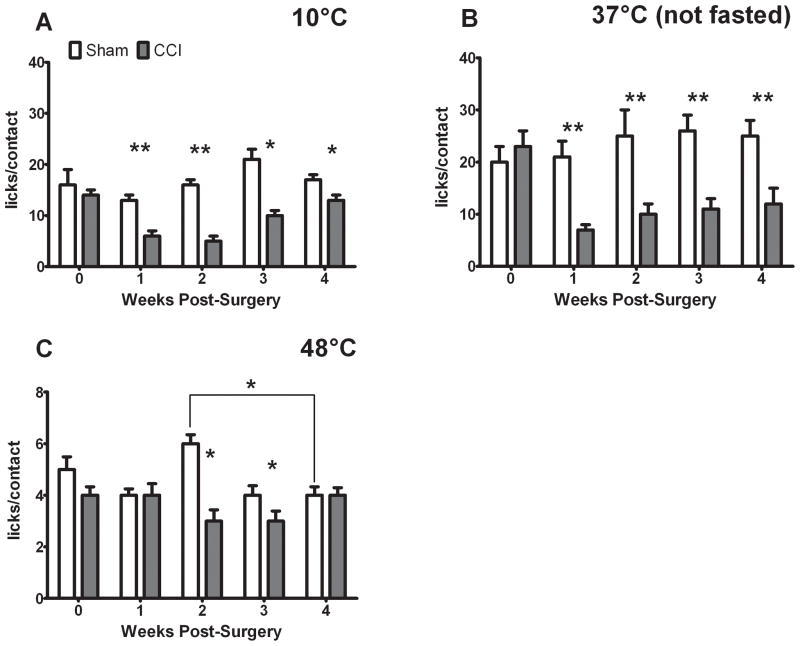Figure 5.
CCI reduces pain indices (licks/contact) with 10 and 37°C stimulation, but does not reduce pain index from baseline with 48°C stimulation. CCI-treated rats exhibit reduced pain-indices with 10°C stimulation (A) compared to both their own baseline and their sham-counterparts at one and two weeks post-surgery (indicated by **, ANOVA and t-test). At three and four weeks post-surgery the pain indices of CCI-treated rats were still lower than their sham-counterparts (indicated by *, t-test). CCI-treated rats also exhibited reduced pain indices at all post-operative time points with 37°C stimulation (B) compared to both their own baseline and their sham-counterparts (indicated by **, ANOVA and t-test). There was no effect of sham treatment for either of these temperatures. In contrast, CCI treated rats’ post-operative pain indices with 48°C stimulation (C) did not differ from their pre-operative baseline, only with their sham-treated counterparts at two and three weeks post-surgery (indicated by *, t-test). Sham-treated rats also exhibited significantly greater pain indices at two weeks post-surgery than at four weeks (indicated by * over lines, ANOVA). There was a significant effect between treatment groups at 48°C, but there was a significant difference between sham pain indices at 2 and 4 weeks post-treatment (indicated by *). P < 0.05 and all data are mean ± SEM.

